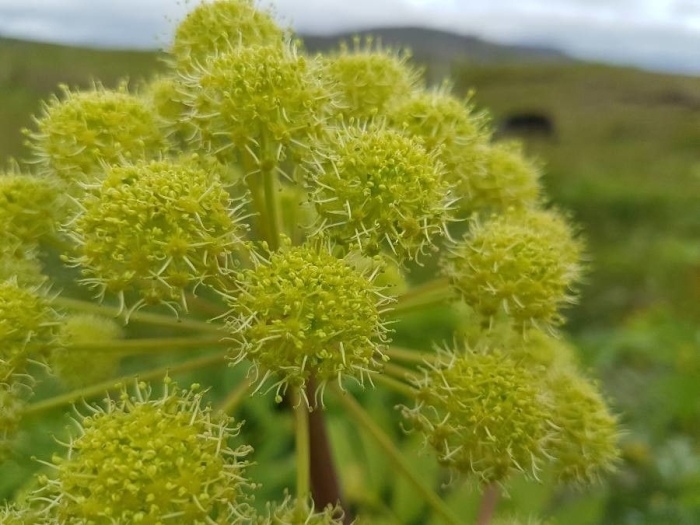Garden Angelica
(Angelica archangelica)
Garden Angelica (Angelica archangelica)
/
/

frieda floor
CC BY-SA 4.0












































Estimated Native Range
Summary
Garden Angelica is valued for its imposing architectural presence in the garden, as well as for its fragrant foliage and stems. It is often used in cottage gardens, herb gardens, and naturalized plantings. This plant prefers moist, rich soils and can tolerate full sun to part shade. It requires consistent moisture and does not tolerate drought well. While it is generally easy to maintain, it can be susceptible to fungal diseases in overly wet conditions. Garden Angelica is not typically invasive but can self-seed prolifically under ideal conditions. It is important to monitor and manage self-seeding to prevent unwanted spread.CC BY-SA 4.0
Plant Description
- Plant Type: Herb
- Height: 3-6 feet
- Width: 2-4 feet
- Growth Rate: Moderate
- Flower Color: Green, White
- Flowering Season: Summer
- Leaf Retention: Deciduous
Growth Requirements
- Sun: Full Sun, Part Shade
- Water: Medium
- Drainage: Medium
Common Uses
Bee Garden, Bird Garden, Butterfly Garden, Deer Resistant, Edible*Disclaimer: Easyscape's listed plant edibility is for informational use. Always verify the safety and proper identification of any plant before consumption., Fragrant, Water Garden
Natural Habitat
Subarctic and temperate regions of the Northern Hemisphere, particularly along riverbanks, in ditches, and in moist meadows
Other Names
Common Names: Garden Angelica, Wild Celery, Kvan, Engelwurz, Echte Engelwurz, Väinönputki, Angélique Vraie, Kvann, Grote Engelwortel, Angelika
Scientific Names: , Angelica archangelica, Angelica officinalis, Angelica commutata, Angelica discocarpa, Angelica officinalis var. himalaica, Angelica sativa, Archangelica alpina, Archangelica archangelica, Archangelica commutata
GBIF Accepted Name: Angelica archangelica L.